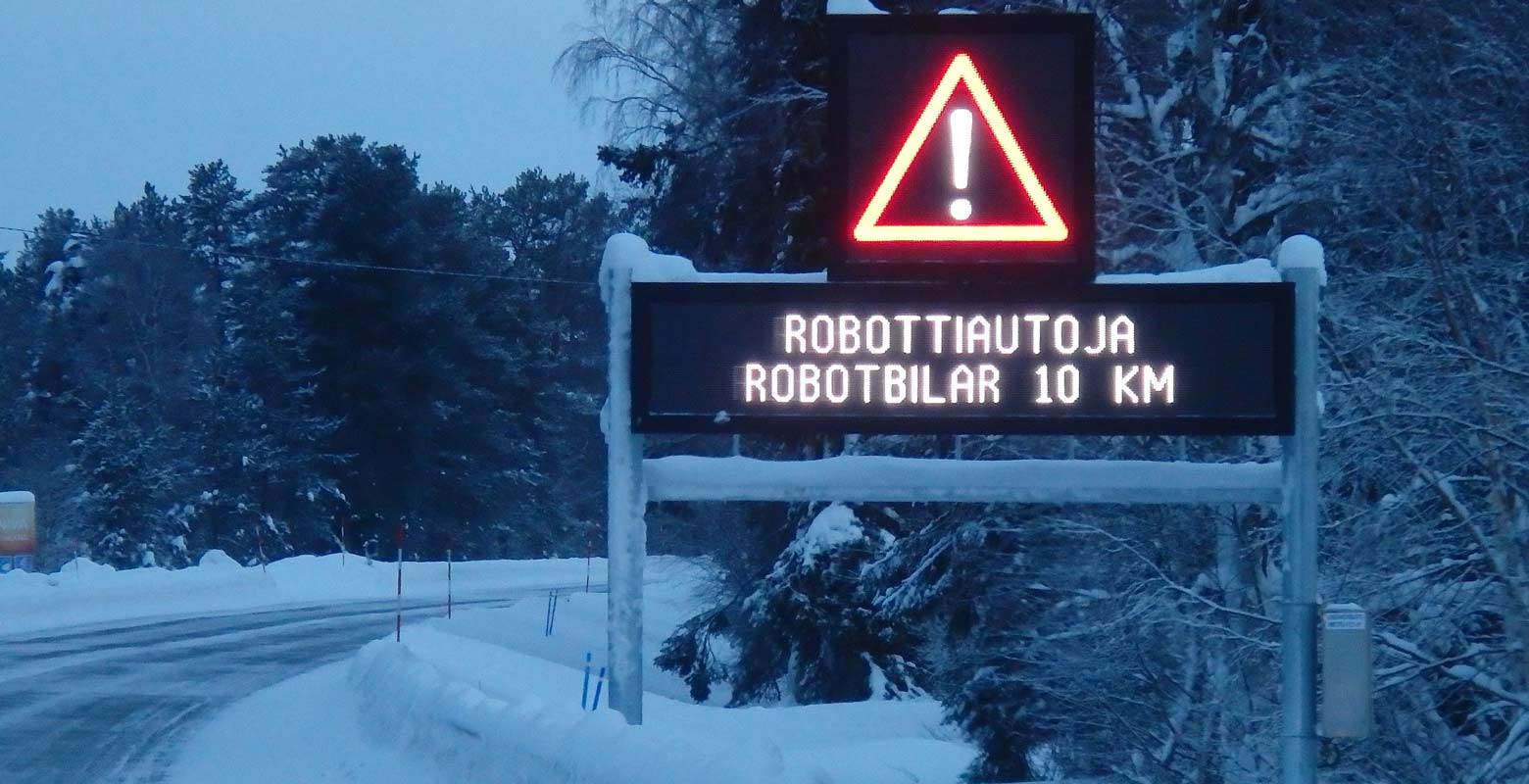In the Arctic Challenge research project, 15 Finnish companies search for solutions in four different areas to the challenges northern conditions bring to road transport automation: reflector poles and snow plough markers, proactive messaging about road conditions, such as a slippery road surface, remote control and wireless communication, as well as spatial data and positioning. The project was launched in 2017 by the Finnish Transport Agency and Trafi. The results will be published in 2019.
"The first test week was completed successfully in collaboration between all the participating companies. In addition, the companies carried out their own tests in both summer and winter conditions. The results obtained are preliminary and the experiments will continue over the winter. We follow the process with great interest to see if the results confirm what we have learned so far", says Chief Adviser Anna Schirokoff from Trafi.
Solutions of digital and physical infrastructure to support automated vehicles in northern conditions
A project group formed by Lapland University of Applied Sciences and Roadscanners Oy has examined how reflecting surfaces made of different materials and attached to reflector poles affect radar sensors’ ability to detect the poles along the roadside. The purpose of the reflectors is to improve the detection of an automated vehicle on a snowy road. Based on the preliminary results, experiments will continue with angular reflectors made of aluminium and encapsulated in plastic. Some issues remain to be clarified, for example, how the angles of reflective surfaces affect their detection from a moving vehicle.
A project group led by VTT Technical Research Centre of Finland Ltd has examined mobile networks and short-range data exchange for the transmission of road condition information in Arctic conditions. In the first experiments, short-range radio technology installed in the road infrastructure managed to transmit information to the driver about a danger ahead. In addition, VTT’s automated vehicle Martti has attained a speed of 40 km/h on snowy roads and managed to filter out the adverse effects of snow dust from radar sensors’ observations.
A group of eight companies led by Sensible4 Ltd has studied the positioning of a vehicle by running several test drives with the automated car Juto. The first good results in positioning a vehicle have been achieved with a combination of a 3D laser radar, 3D map and an inertial and satellite navigation system, which has enabled autonomous driving with centimetre accuracy in any weather. In addition, experiments have been made to define location by radio beacons placed on the reflective poles which emit very short range and high frequency radio signals. According to the preliminary findings, the edge of the road can thus be located with an accuracy of a few centimetres in varying winter conditions.
Preparing for the next test weeks: first snow is expected in Muonio
The Arctic Challenge project is preparing for the winter test weeks, which will take place on the intelligent road Aurora in Muonio in October–November and in March. The intelligent road is a 10-kilometre test section equipped to support the testing of automatic traffic.
"The Arctic Challenge test weeks and the intelligent road are open to everyone. If a company, research institute or public operator has an interest in road transport automation or Arctic testing of an intelligent digital and physical infrastructure, we offer a broad Aurora network of more than 70 members", says Project Manager Ilkka Kotilainen from the Finnish Transport Agency.
At the beginning of October, the Sensible4 group will continue the experiments by examining remote controlling of a vehicle in northern conditions as well as Lidar positioning in different seasons and circumstances. At the beginning of November, the VTT research group will carry out a study of mobile and short-range networks essential for remote control, and continue the experiments with road condition data. Lapland University of Applied Sciences and Roadscanners will continue the verification of measurements conducted on reflector poles’ reflective surfaces with an automated vehicle.
Enquiries:
Arctic Challenge research project:
Anna Schirokoff, Chief Adviser, Trafi, anna.schirokoff (at) trafi.fi, tel. +358 29 5345 268 Twitter: @AnnaSchirokoff
Ilkka Kotilainen, Project Manager, Finnish Transport Agency, firstname.lastname (at) liikennevirasto.fi, +358 50 311 8016 Twitter: @ilkkakoti
Aurora test area
Alina Koskela, Special Adviser, Trafi (Aurora test area), firstname.lastname (at) trafi.fi, +358 46 921 9460 Twitter: @alina_koskela
Reija Viinanen, Director, Aurora collaboration, Finnish Transport Agency, firstname.lastname (at) liikennevirasto.fi, +358 400 423 370, Twitter: @ReijaViinanen

